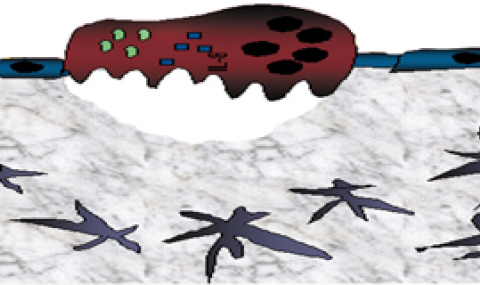Bone marrow hematopoietic stem and progenitor cells (HSPCs), are maintained in their undifferentiated state, which is essential to sustain their reservoir throughout life. A fraction of HSPCs differentiate and egress from the bone marrow to replenish the circulation along with mature blood and immune cells as part of daily hematopoiesis and host defense. Strikingly, dynamic switch between quiescence and differentiation is correlated with several changes in cellular metabolism. Therefore, characterization of the main metabolites that regulate HSPCs metabolism in steady state and upon stress induced situation is a major challenge.
Different researchers including us have previously reported that prostaglandin E2 (PGE2) and its producing-enzyme COX-2 plays an important role in HSPCs engraftment and metabolism by reducing the level of reactive oxygen species (ROS) in HSPCs. In this proposed study, we hypothesize that PGE2 signaling might regulate HSPCs metabolism by maintaining the glycolysis state and preventing lactate influx to the mitochondrial oxidative phosphorylation. Moreover, we think that PGE2 protect HSPCs during stress induced mobilization from the bone marrow to the peripheral blood. To test our hypothesis, we conducted several in vivo and in vitro experiments to test metabolic parameter changes in HSPCs. In our in vitro investigations, we found that incubating the HSPCs with PGE2 increased HIF-1α expression leading to higher lactate production. Similarly, in vivo studies revealed that PGE2 reduced both HSPCs steady state egress as well as G-CSF induced mobilization. These results indicate the retention supportive activity of PGE2. Mechanistically, PGE2 mediates HSPCs’ retention indirectly via increasing lactate production and interference with lactate producing enzyme LDHA abolished PGE2 retention effect. Furthermore, we uncovered the role of lactate-GPR81 signaling in regulating HSPCs quiescence and retention by demonstrating that mice lacking lactate receptor GPR81 have higher bone marrow cellularity and show increased mobilization following G-CSF treatment.
This study aims to discover the signaling machinery of the small metabolites like PGE2 and lactate in regulating HSPCs function. In addition, we are seeking further to explore new metabolic pathway that might be involved in regulating HSPCs retention in steady-state and upon mobilization. Our second aim, is to investigate the direct role of circadian rhythm on HSPCs by evaluating intracellular metabolic changes, and the indirect role of circadian rhythm by testing BM fluid metabolomics.



